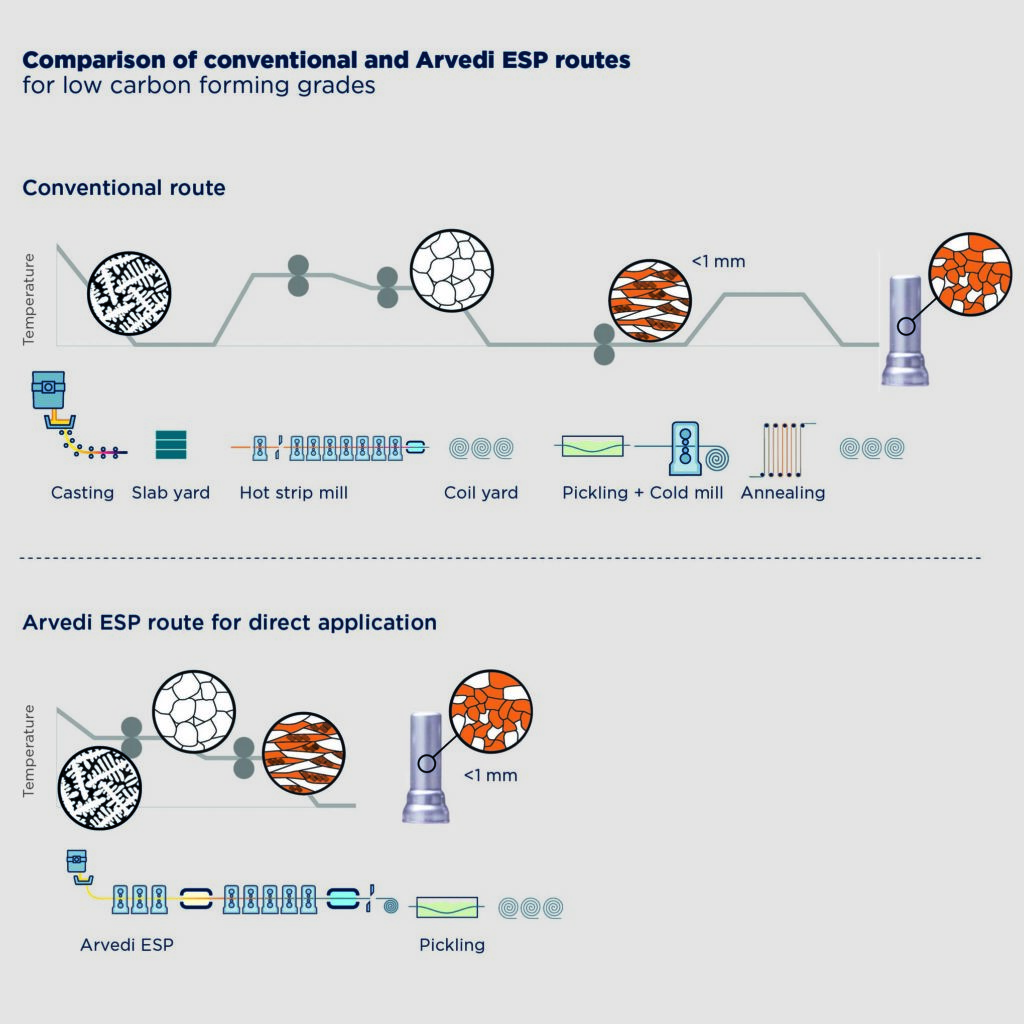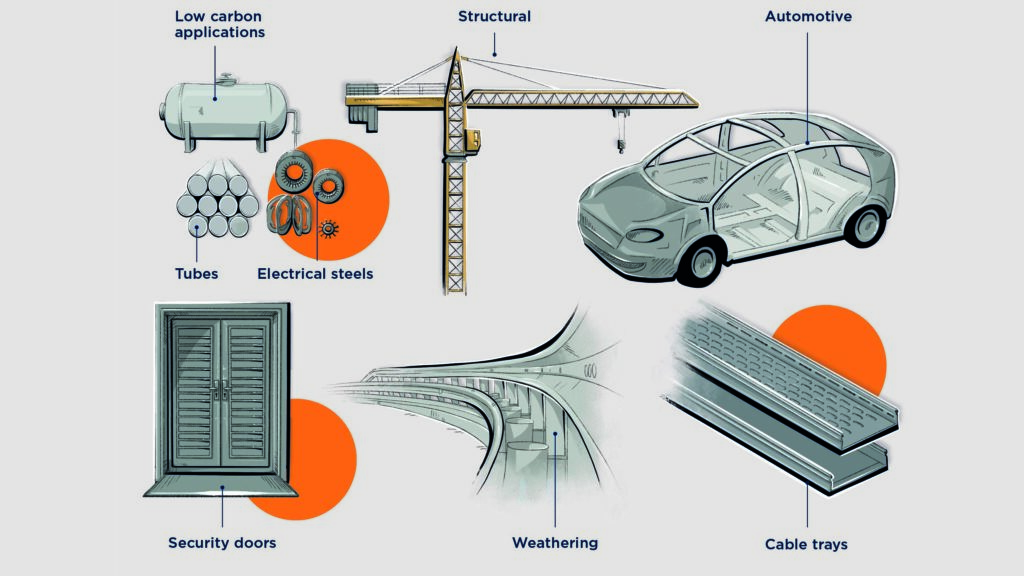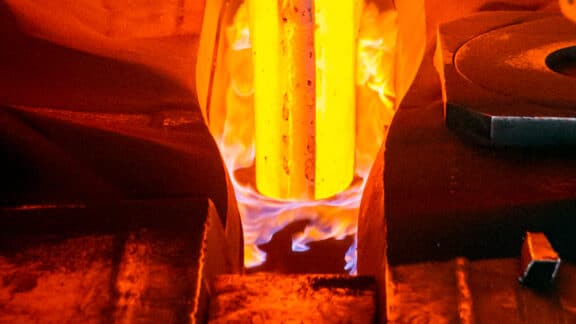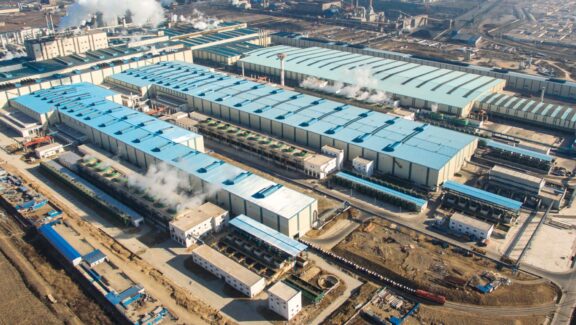(Above) Henan Yaxin’s environmentally friendly minimill featuring the EAF Quantum and Arvedi ESP
While steel producers face the global challenges of climate change and seek environmentally friendly technologies, Arvedi ESP is the only proven means of green steel strip production. Since 2009, Arvedi ESP has set the standard for thin and ultra-thin direct application end products while maintaining and improving on a minimal carbon footprint.
While it may be hard for some to imagine such an innovative technology for reducing CO2 emissions, low energy consumption, and reduced operational expenditures to have been around since 2009 and only improved since then, Arvedi ESP is such a technology. What began as the groundbreaking vision of Italian inventor Giovanni Arvedi has become one of the most innovative and adopted technologies on the market for Endless Strip Production. Since Arvedi’s vision began, nearly two decades ago in 2006, and after the first demonstration of Endless Strip Production in 2009, the planet has undergone immense changes. Among those changes are a global awareness of climate change and an appeal to heavy industries worldwide to transform and adapt to a changing landscape.
Climate Change WorldWide
As the effects of climate change become more apparent year after year, governments have thankfully chosen to work together toward a mutual goal to tackle this imminent crisis. During the 21st Conference of the Parties (COP21) in 2015, the Paris Agreement to limit global warming to 1.5 degrees Celsius marked the first legally binding international treaty on climate change. In 2021, world leaders renewed their commitment to climate change during COP26 in Glasgow, United Kingdom. Following the U.N. Climate Change Conference, during COP26, committed U.N. members have now covered 90 percent of global emissions through net-zero commitments. For example, the E.U. and U.S.A. have agreed to net-zero emissions by 2050 and China and Brazil by 2060.
In the E.U., the European Green Deal has declared a reduction in emissions by 55 percent until 2030. As the decade progresses toward 2030, international legislation and regulations will seek to effectively motivate carbon-intensive sectors toward carbon neutrality, such as the energy and steel industries. While these regulations may appear to be inconvenient hurdles, innovators in these sectors that are willing to invest in readily available technologies will reap the rewards of green production.
Understanding Carbon Emissions
Amidst growing concerns regarding climate change, steel producers must find solutions to reduce CO2 emissions while maintaining production capacities and meeting increasing demands for high-strength steels. These concerns are not only limited to the cost of production based on raw materials and energy consumption but also the imminent implications of the E.U.’s Emission Trading System (ETS) and the related Carbon Border Adjustment Mechanism (CBAM). Yet, while these systems appear daunting, a brief understanding of how they apply to technologies, such as Arvedi ESP and steel production, may help appreciate their value and potential to increase competitiveness worldwide.
LEARN MORE ABOUTARVEDI ESP
Click here to access our on-demand webinar “Zero-Carbon Emissions Casting and Rolling of Direct Application Sheet with Arvedi ESP.”
Amidst growing concerns regarding climate change, steel producers must find solutions to reduce CO₂ emissions and maintain production capacities.
To state it plainly, the primary focus of CO2 emission reduction for global ETS and carbon tax systems is Scope 1 emissions. Scope 1, 2, and 3 emissions include those emissions produced by the company directly (Scope 1), those emissions produced from the company’s energy consumption (Scope 2), and, finally, emissions produced indirectly in upstream and downstream processes (Scope 3). Thus, when calculating the impact of various carbon taxes, steel producers must look primarily toward reducing their Scope 1 emissions.
To this end, a traditional steel production route, including ironmaking utilizing a blast furnace, BOF steelmaking, casting, hot rolling, and cold rolling, would amount to the total direct emissions of a steel producer, or Scope 1. The amount of electricity used is indirect emissions, or Scope 2. Scope 3 includes the production and transport of raw materials and the transportation of the finished products (see Figure 2). If any of the input materials, electricity, or shipment is handled by the same company, then it stands to reason that these may be calculated and transferred over company borders accordingly. To prevent leakage, CBAM in the E.U. also ensures that producers pay carbon taxes on goods imported into the E.U.
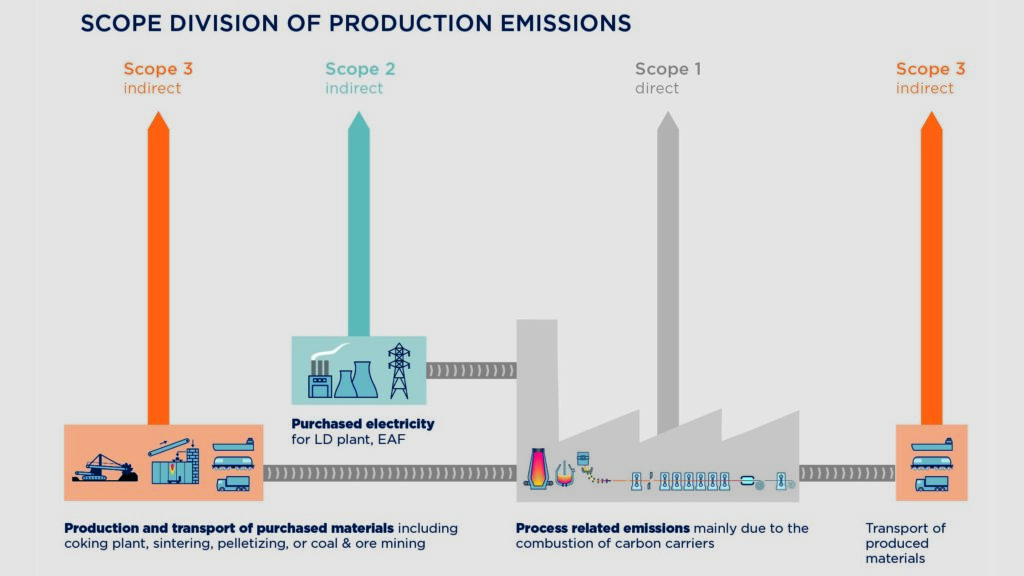
For the E.U., CBAM is just one example of carbon tax initiatives emerging throughout the globe. While ETS prices may vary from country to country and emissions categorically differ depending on specific regulations, the cost of emissions will continuously rise. In The World Bank’s investigation from 2021, the price of CO2 reached 137 dollars per ton in Sweden. While pricing schemes vary, the E.U. Carbon Permits have seen a steady increase. At the start of 2022, the price of Carbon Permits reached 97.50 euros. Amidst this array of measures taken to motivate industries to decarbonize, one thing remains clear, the cost of CO2 emissions will steadily rise, and while some loopholes remain, transitioning to low-carbon and carbon-neutral solutions will make or break industry leaders.
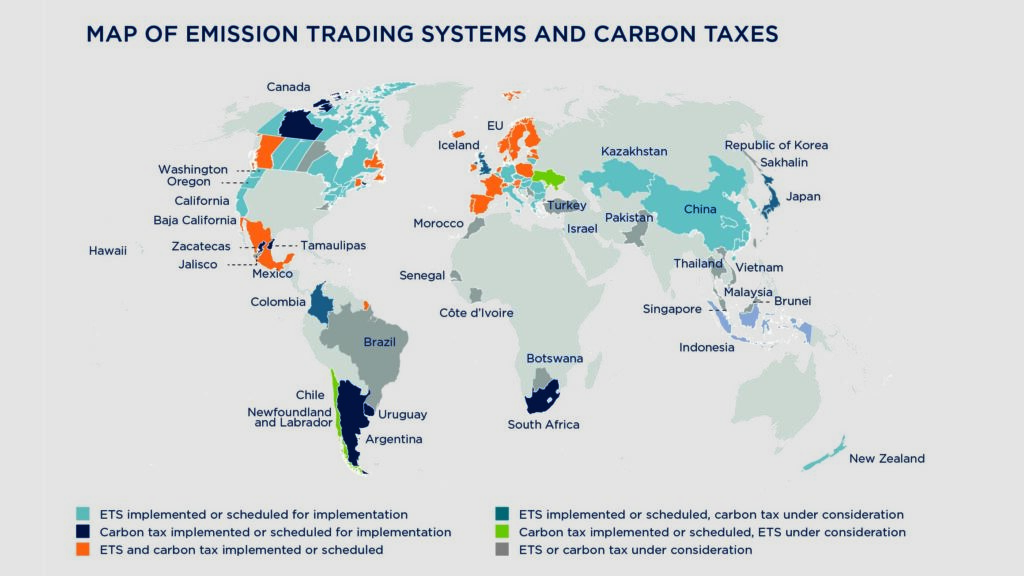
Arvedi ESP Means Green Steel
While the adoption of low-carbon and zero-carbon technologies often involves an investment in technologies that have yet to prove their mettle, Arvedi ESP is unique amongst such technologies. Arvedi ESP is a proven “currently available technology,” according to the E.U. Policy Department for Economic, Scientific, and Quality of Life Policies. In their publication “Moving towards Zero-Emission Steel,” they found that incorporating “near-net shape casting,” such as Arvedi ESP, can substitute the conventional hot rolling process, representing approximately 20 percent of the emissions from steel production. According to the same report, the CO2 reduction capabilities of all available near net shape casting technologies average a 60 percent decrease in emissions via a reduction in energy consumption, according to reports by ICF Consulting Services from 2019. When looking at the overall impact of Arvedi ESP, the numbers amount to even greater potential.
The efficient and ultra-compact Arvedi ESP line boasts a 45 percent lower energy consumption than conventional casting and rolling plants.
From the beginning, the efficient and ultra-compact Arvedi ESP line boasted the lowest possible energy consumption than conventional casting and rolling plants. When combined with liquid steel supplied from an EAF Quantum with optimized melting technology, operational costs, CO2 emissions, and energy costs are all reduced. This technology combines well with the scrap use and renewable energies to reach the most stringent levels of environmentally friendly production. This combination ultimately amounts to a scrap-based EAF/ESP route that produces 95 percent fewer CO2 emissions (see Figure 4). Suppose we zoom in to the difference between Arvedi ESP and a traditional continuous casting, reheating, hot strip mill production route. In that case, Arvedi ESP means 99 percent fewer emissions than the conventional route—the maximum reduction in emissions from this portion of steel production, also reducing operational expenditures, overall carbon footprint, and space required for such an operation.

Endless Innovation
The minimill of the future is already in operation since 2021 by Chinese steel producer Henan Yaxin. The entire production route, from scrap to cold band substitute, produces 123 kilograms of CO2 per ton of steel. With two EAF Quantum electric arc furnaces and an Arvedi ESP line at its Fujian Dingsheng plant, Henan Yaxin produces high-quality, ultra-thin strip ready to enter new market segments with direct application products. Henan Yaxin sets a new environmental benchmark for steel production by omitting cold rolling, annealing, and related emissions. The minimal energy requirement of this minimill for flat products contributes to a 95 percent reduction in CO2 emissions and a reduction in operating costs.
As climate change and resulting countermeasures present more and more challenges to steel producers, change is an opportunity for businesses to improve. Reliable technologies for low emission steel production, reducing overall emissions, have been available for years. When laying the groundwork for new and modernized installations, green technologies like Arvedi ESP and the EAF Quantum are a chance for steel producers to anticipate upcoming changes presented by legislation and emerge as frontrunners in green steel production. The concept of modular transitions, replacing superfluous production steps with ESP, expedites a transition of the existing production process to a more environmentally compatible steelmaking process. For the production of high-quality steel, combined green steel solutions from Primetals Technologies mean an endless return on investment for years to come.
In conventional production processes, a steel sheet is produced over several steps where the material cools down to ambient temperature after casting and is reheated for hot rolling. After cold rolling to the required thickness below 1 millimeter, the steel is heated again for annealing. After these steps, the material is then ready for application.
The Arvedi ESP process performs casting and rolling down to a minimum thickness of 0.6 millimeter in a single step lowering energy requirements to a minimum. The hot-rolled Arvedi ESP material fulfills all comparable cold-rolled material requirements and can thus be directly applied. The illustration demonstrates how Arvedi ESP compares when producing low carbon forming steel grades.
